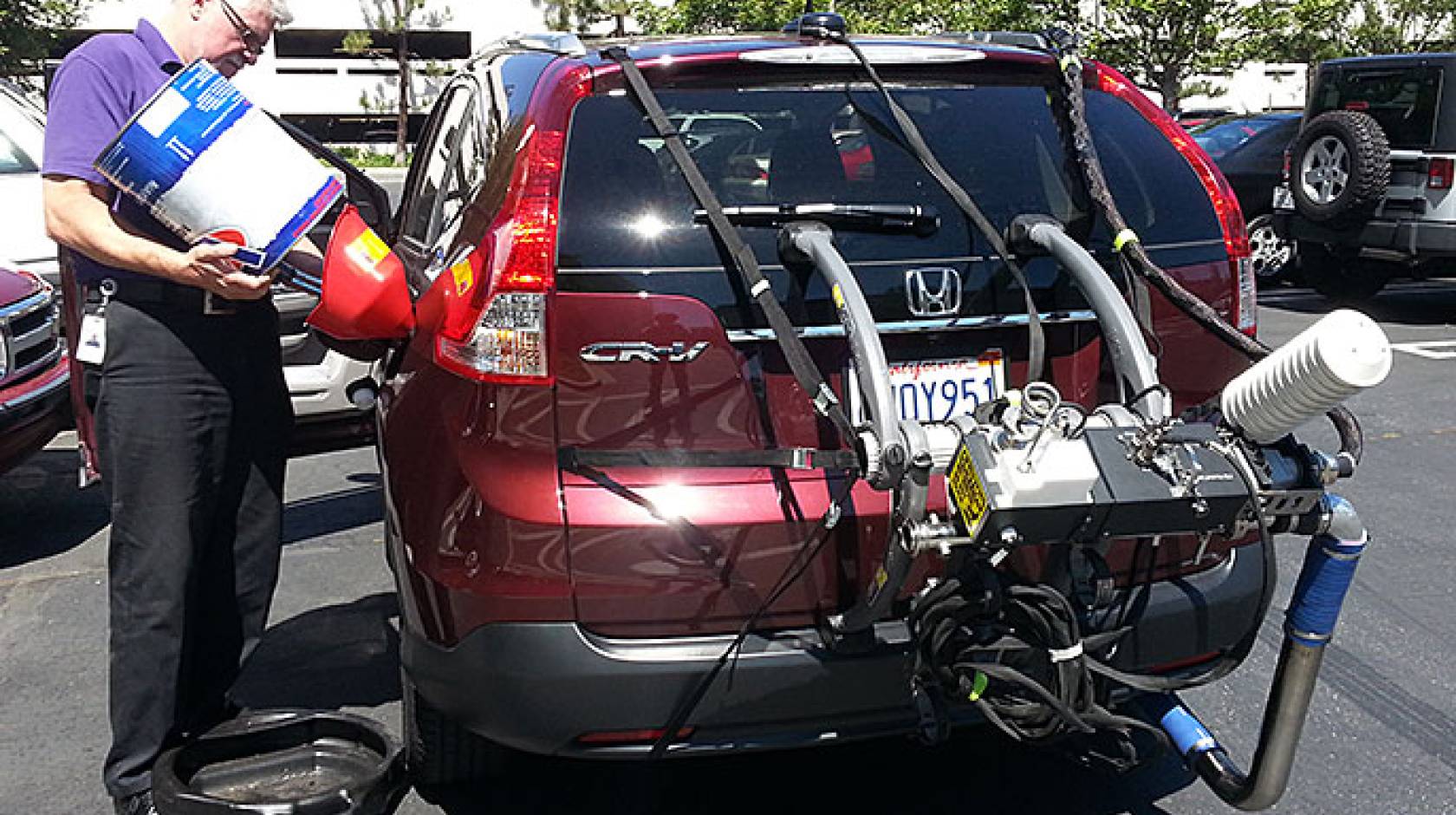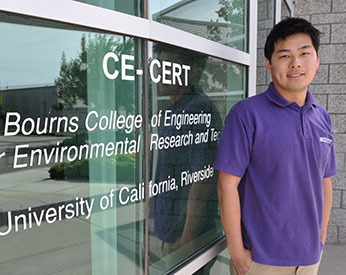Sean Nealon, UC Riverside

Do you ever wonder about the accuracy of those miles per gallon ratings pasted on windows of new cars?
So did Emissions Analytics, a United Kingdom-based vehicle emissions testing company. With the help of Sam Cao, a graduate student at the University of California, Riverside’s Bourns College of Engineering, they set out to test the accuracy, but with one significant difference.
Those numbers are based on a standardized test procedure performed in a laboratory by the Environmental Protection Agency. Emissions Analytics placed portable emissions measurement equipment on vehicles to test fuel economy while the cars were being driven on the road.
Where the differences occur
They found differences — up to 20 percent. Some cars fared better than EPA estimates, some worse and some about the same. For example:
- A 2013 Honda Accord LX four-door sedan had an EPA rating of 27 miles per gallon on city streets and 36 miles per gallon on highways. The Real MPG, as Emissions Analytics calls their figure, was 19.8 city and 33.6 highway.
- A 2014 Volkswagen Jetta 1.8T SE four-door sedan had EPA ratings of 25 city and 36 highway. The Real MPG numbers were 27.9 city and 39.2 highway.
- A 2014 Chevrolet Camaro ZL1 two-door convertible had EPA ratings of 12 city and 18 highway. The Real MPG numbers were 12 city and 18.9 highway.
The figures for all cars tested by Emissions Analytics can be found on the website of Motor Trend magazine, which partnered with Emissions Analytics on the project. Currently, there are around 100 vehicles reported, but the list is growing. On average, of the cars already tested, there was less than 1 percent difference between the EPA numbers and Emissions Analytics findings.
“It’s not particularly surprising that EPA ratings are good on average as they include cost start, air conditioning and high speed testing,” said Nick Molden, the founder and CEO of Emissions Analytics. “However, differences for individual vehicles vary from about minus 20 percent to plus 20 percent, which shows that the EPA does not characterize typical driving patterns that well.”
U.S. vs. U.K.
That contrasts sharply with findings by Emissions Analytics when they tested cars in the United Kingdom. Calling their ratings True MPG, after analyzing more than 300 vehicles, they found miles per gallon ratings on average 20 percent worse than those touted by the vehicle manufacturer.

The reason for the difference between the US and Europe is primarily due to two factors, Molden said. First, the European duty cycle is undemanding, with relatively low speeds and accelerations, and plenty of idling. Second, under pressure to post high official fuel economy numbers, certain flexibilities in the test protocol have been exploited by some equipment manufactures in Europe.
Cao, who works under Kent Johnson, an assistant research engineer at the Bourns College of Engineering Center for Environmental Research and Technology, worked with Emissions Analytics during the summer of 2013 as they tested vehicles at Motor Trend’s office in El Segundo.
Cao, a 2006 graduate of Temecula Valley High School who expects to earn his Ph.D. in June, has worked extensively with portable emissions measurement equipment at UC Riverside.
While working with Emissions Analytics, Cao’s duties included installing the measurement equipment, trouble-shooting data acquisition problems and calibrating the instruments.
It takes about an hour to load the 170 pounds of emissions testing equipment. It attaches to the back of a car like a bicycle rack. The equipment connects to the exhaust pipe and takes once-a-second exhaust samples for carbon monoxide and carbon dioxide and calculates the fuel burn rate by multiplying it by the total exhaust flow.
Cao also drove the vehicles, along with Sam Boyle, global operations director for Emissions Analytics, on standardized highway and off-highway routes in Southern California. The highway and off-highway cycles would total 90 miles for each vehicle. Some cycles are done with the air conditioning on and others with it off because of the impact of air conditioning on fuel economy.
Cao’s work on the project is one of the latest examples of a more than 20-year history of emissions testing at the Center for Environmental Research and Technology. Initially, research focused on testing cars and trucks in a stationary setting. Now much of the testing is done on the road with portable emission measurement systems (PEMS).

